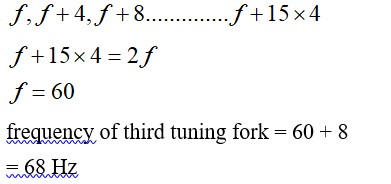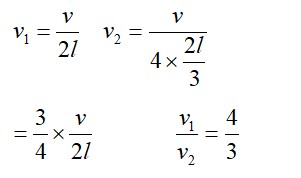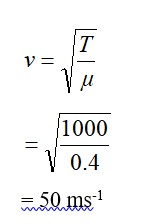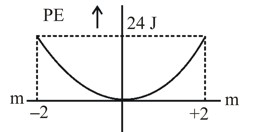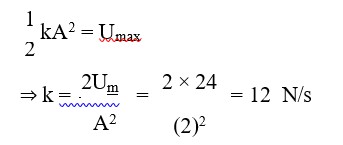15.11 The transverse displacement of a string (clamped at its both ends) is given by
y(x, t) = 0.06 sin( cos (120
where x and y are in m and t in s. The length of the string is 1.5 m and its mass is 3.0 ×10–2 kg.
Answer the following :
(a) Does the function represent a travelling wave or a stationary wave?
(b) Interpret the wave as a superposition of two waves travelling in opposite directions. What are the wavelength, frequency, and speed of each wave ?
(c) Determine the tension in the string
15.11 The transverse displacement of a string (clamped at its both ends) is given by
y(x, t) = 0.06 sin( cos (120
where x and y are in m and t in s. The length of the string is 1.5 m and its mass is 3.0 ×10–2 kg.
Answer the following :
(a) Does the function represent a travelling wave or a stationary wave?
(b) Interpret the wave as a superposition of two waves travelling in opposite directions. What are the wavelength, frequency, and speed of each wave ?
(c) Determine the tension in the string
-
1 Answer
-
(a) The general equation representing a stationary wave is given by the displacement function y(x,t) = 2asin kx cos
The equation is similar to the give equation y(x, t) = 0.06 sin ( cos (120
Hence, the given function represents a stationary wave.
A wave travelling along the positive x-direction is given as: = asin ( t – kx)
The wave travelling along the negative x-direction is given as: = asin ( t + kx)
(b) The superposition of these two waves yields:
y = = asin ( t – kx) + asin ( t + kx)
= a sin( t)cos(kx) – a sin
...more
Similar Questions for you
The acceleration of wave is g/2. Its speed increases as it moves up. So answer is (2)
Taking an Exam? Selecting a College?
Get authentic answers from experts, students and alumni that you won't find anywhere else
Sign Up on ShikshaOn Shiksha, get access to
- 66k Colleges
- 1.2k Exams
- 680k Reviews
- 1800k Answers

